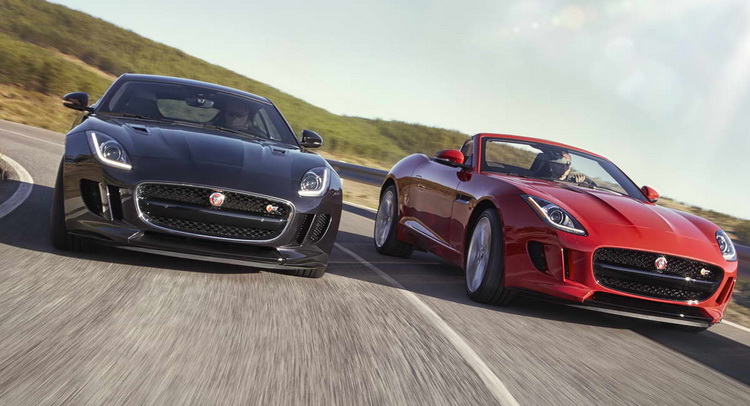Just two years after its market launch in roadster form, and less than six months after the coupe went on sale, the F-Type gets a host of changes and options that will more than double its line-up, from the current six models to a total of 14.
Jaguar announced the changes and additions made to its sports car for 2015 (MY2016) during the Los Angeles Auto Show. They’re quite important, too – not your average nip-and-tuck jobs undertaken by other manufacturers.
First of all, the F-Type will become the first Jaguar sports car since the ‘70s to come with a manual transmission. The six-speeder, which will be available with the V6, rear-wheel drive (more on that later…) models, has a throw of only 45mm and closely-spaced ratios and has been developed, like the Quickshift eight-speed auto with transmission experts ZF.
“A manual transmission in a sports car is always the purist driver’s choice – and to meet their expectations the manual F-TYPE had to offer a completely engaging driving experience”, said Jaguar’s Chief Engineer Mike Cross.
“The short throw of the gear lever, the mechanical quality of the shift, pedal spacing ideally suited to heel-and-toe changes, the tune of the V6 supercharged engine itself – all have been subject to detailed scrutiny to ensure driving a manual F-Type is as fun as it is fast”, he added.
Another important addition is that of an all-wheel drive system that will be available for the V6S and the V8R equipped with the Quickshift gearbox, in both coupe and convertible bodies. It shares many components from AWD modules used in the XJ and XF saloons, but with “next-gen” electronics and a focus on ultimate performance and driving dynamics rather than traction.
The AWD used in the F-Type features what the company calls Intelligent Driving Dynamics (IDD). It’s an in-house developed system that controls the interaction between the all-wheel drive, the rear, electronically controlled (in the V8) or mechanical limited-slip differential and the torque vectoring and Dynamic Stability systems.
Under normal conditions, 100 percent of torque is sent to the rear axle. According to data such as yaw rate, steering wheel angle, wheel speed, lateral and longitudinal acceleration and the Driving Dynamics mode selected, the IDD determines when and how it should distribute torque to the front axle via an electromechanically-actuated coupling.
Jaguar’s Vehicle Program Director for Sports Cars Russ Varney explains: “What we require of our AWD system in the F-Type is optimal traction in all weather conditions, but preserving rear-drive feel without any corruption. IDD allows us to provide ‘torque on demand’ – this means we get the great steering precision and efficiency of a rear-wheel drive car but with the additional traction to match the driver’s demands, the road surface and the driving situation.”
Now, for the most controversial change of all: the electric power assisted steering (EPAS). When the F-Type was launched it had hydraulic power assistance, a rare thing in an age where all carmakers go for EPAS. In fact, you might recall all the fuss that was created about the Porsche 991 adopting an EPAS…
Tim Clark, the company’s Chief Technical Specialist, insists that the F-Type was originally launched with hydraulic power assistance because there wasn’t an EPAS out there that offered the same level of information to the driver.
According to Clark, the EPAS used in the revamped F-Type has been developed since 2008 and “outperforms anything we’ve previously offered, providing the agility and interaction you’d demand of a Jaguar sports car”. At the same time it reduces fuel consumption and CO2 emissions by 4g/km on average, as it uses energy only when required.
















































































